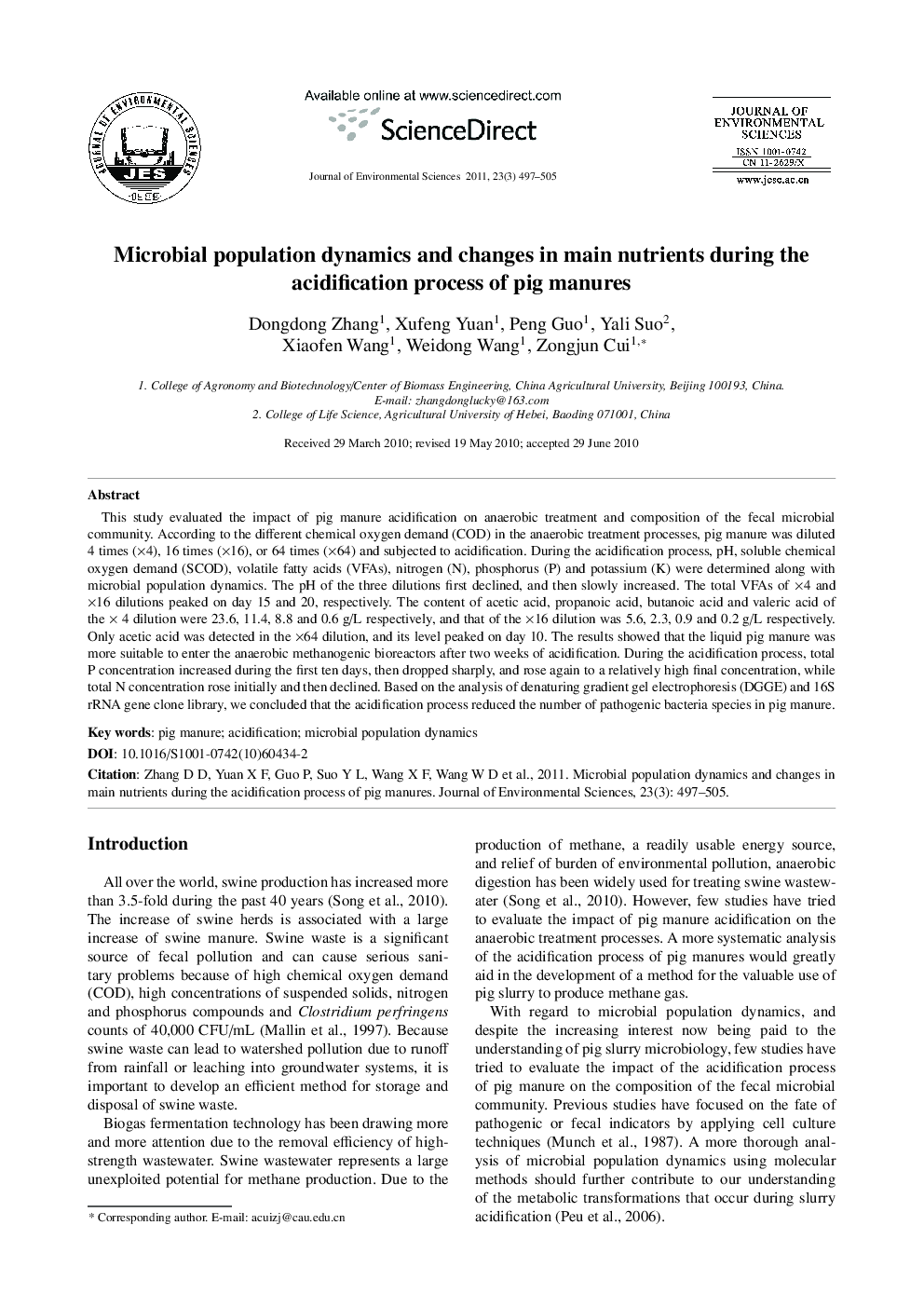| کد مقاله | کد نشریه | سال انتشار | مقاله انگلیسی | نسخه تمام متن |
|---|---|---|---|---|
| 4455527 | 1312521 | 2011 | 9 صفحه PDF | دانلود رایگان |

This study evaluated the impact of pig manure acidification on anaerobic treatment and composition of the fecal microbial community. According to the different chemical oxygen demand (COD) in the anaerobic treatment processes, pig manure was diluted 4 times (×4), 16 times (×16), or 64 times (×64) and subjected to acidification. During the acidification process, pH, soluble chemical oxygen demand (SCOD), volatile fatty acids (VFAs), nitrogen (N), phosphorus (P) and potassium (K) were determined along with microbial population dynamics. The pH of the three dilutions first declined, and then slowly increased. The total VFAs of ×4 and ×16 dilutions peaked on day 15 and 20, respectively. The content of acetic acid, propanoic acid, butanoic acid and valeric acid of the × 4 dilution were 23.6, 11.4, 8.8 and 0.6 g/L respectively, and that of the ×16 dilution was 5.6, 2.3, 0.9 and 0.2 g/L respectively. Only acetic acid was detected in the ×64 dilution, and its level peaked on day 10. The results showed that the liquid pig manure was more suitable to enter the anaerobic methanogenic bioreactors after two weeks of acidification. During the acidification process, total P concentration increased during the first ten days, then dropped sharply, and rose again to a relatively high final concentration, while total N concentration rose initially and then declined. Based on the analysis of denaturing gradient gel electrophoresis (DGGE) and 16S rRNA gene clone library, we concluded that the acidification process reduced the number of pathogenic bacteria species in pig manure.
Journal: Journal of Environmental Sciences - Volume 23, Issue 3, March 2011, Pages 497-505